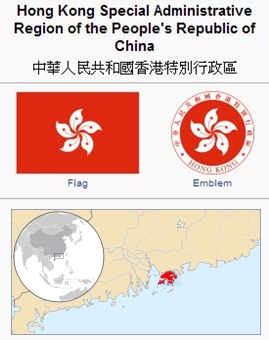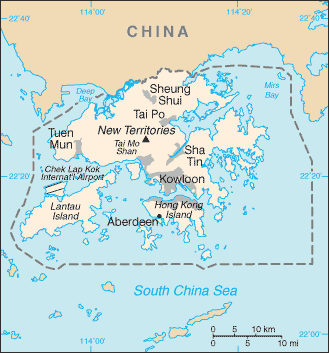Difference between revisions of "Hong Kong (China)"
| [checked revision] | [checked revision] |
(Added table of membership.) |
m |
||
| Line 6: | Line 6: | ||
The Mennonite presence in Hong Kong is the Conference of Mennonite Churches in Hong Kong. It originally related to the [[Eastern Mennonite Missions (Lancaster Mennonite Conference)|Eastern Mennonite Board of Missions and Charities]] ([[Mennonite Church (MC)|Mennonite Church]]) and the Commission on Overseas Mission ([[General Conference Mennonite Church (GCM)|General Conference Mennonite Church]]). It was founded in 1976. | The Mennonite presence in Hong Kong is the Conference of Mennonite Churches in Hong Kong. It originally related to the [[Eastern Mennonite Missions (Lancaster Mennonite Conference)|Eastern Mennonite Board of Missions and Charities]] ([[Mennonite Church (MC)|Mennonite Church]]) and the Commission on Overseas Mission ([[General Conference Mennonite Church (GCM)|General Conference Mennonite Church]]). It was founded in 1976. | ||
| + | <div align="center"> | ||
{| {{table}} | {| {{table}} | ||
| align="center" style="background:#f0f0f0;"|'''Denomination''' | | align="center" style="background:#f0f0f0;"|'''Denomination''' | ||
| Line 31: | Line 32: | ||
|style="text-align: right;" |224 | |style="text-align: right;" |224 | ||
|} | |} | ||
| + | </div> | ||
= Bibliography = | = Bibliography = | ||
<em class="gameo_bibliography">Handbook of Information, General Conference Mennonite Church.</em> Newton, KS (1988): 91. | <em class="gameo_bibliography">Handbook of Information, General Conference Mennonite Church.</em> Newton, KS (1988): 91. | ||
Revision as of 07:03, 21 May 2014

Hong Kong is a territory located on China's south coast on the Pearl River Delta. In 2008 it had a population of 6.9 million people, and is one of the most densely populated areas in the world. Beginning as a trading port, Hong Kong became a dependent territory of the United Kingdom in 1842, and remained so until the transfer of its sovereignty to the People's Republic of China in 1997. Hong Kong is one of two special administrative regions and is generally not considered as part of mainland China.
About 95% of Hong Kong's population is of Chinese descent, the majority which is Cantonese. 90% of Hong Kong's population practises a mix of Buddhism (mainly Chinese Mahayana) and Taoism. In 2008 there were 600,000 Christians, divided evenly between Protestants and Roman Catholics, and comprising 8% of the population.
The Mennonite presence in Hong Kong is the Conference of Mennonite Churches in Hong Kong. It originally related to the Eastern Mennonite Board of Missions and Charities (Mennonite Church) and the Commission on Overseas Mission (General Conference Mennonite Church). It was founded in 1976.
| Denomination | Congregations in 2000 |
Members in 2000 |
Congregations in 2003 |
Members in 2003 |
Congregations in 2006 |
Members in 2006 |
Congregations in 2009 |
Members in 2009 |
Congregations in 2012 |
Members in 2012 |
| Conference of Mennonite Churches in Hong Kong | 3 | 90 | 3 | 90 | 3 | 141 | 4 | 193 | 4 | 224 |
Bibliography
Handbook of Information, General Conference Mennonite Church. Newton, KS (1988): 91.
Mennonite World Conference. MWC - 2006 Asia & Pacific Mennonite & Brethren in Christ Churches. Web. 24 October 2008. http://www.mwc-cmm.org/en/PDF-PPT/2006asiapacific.pdf. [Broken Link].
| Author(s) | Reynold Sawatzky |
|---|---|
| Richard D. Thiessen | |
| Date Published | May 2014 |
Cite This Article
MLA style
Sawatzky, Reynold and Richard D. Thiessen. "Hong Kong (China)." Global Anabaptist Mennonite Encyclopedia Online. May 2014. Web. 19 Apr 2024. https://gameo.org/index.php?title=Hong_Kong_(China)&oldid=122289.
APA style
Sawatzky, Reynold and Richard D. Thiessen. (May 2014). Hong Kong (China). Global Anabaptist Mennonite Encyclopedia Online. Retrieved 19 April 2024, from https://gameo.org/index.php?title=Hong_Kong_(China)&oldid=122289.
Adapted by permission of Herald Press, Harrisonburg, Virginia, from Mennonite Encyclopedia, Vol. 5, p. 393. All rights reserved.
©1996-2024 by the Global Anabaptist Mennonite Encyclopedia Online. All rights reserved.

